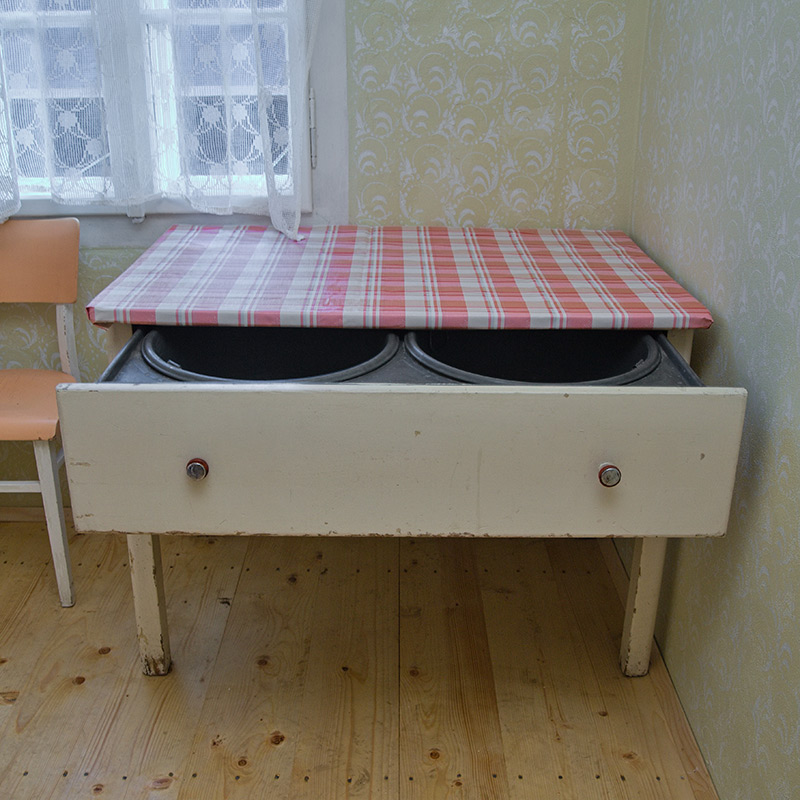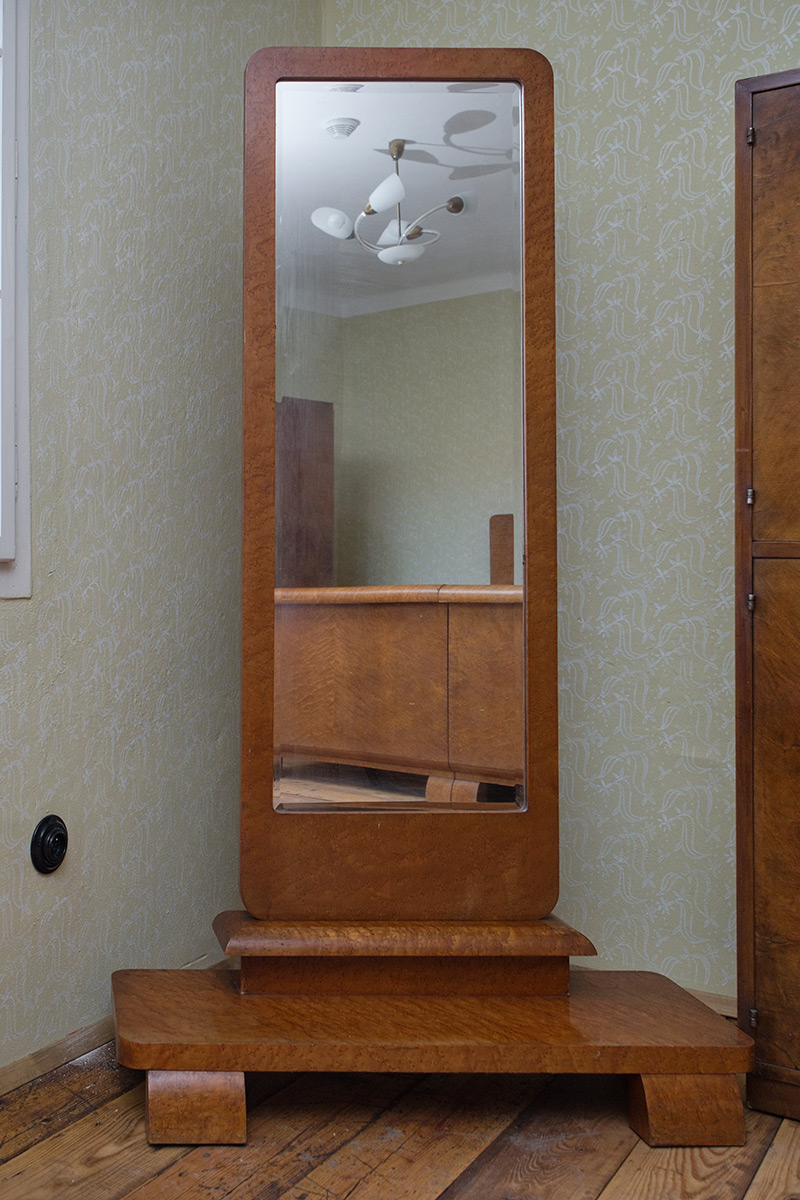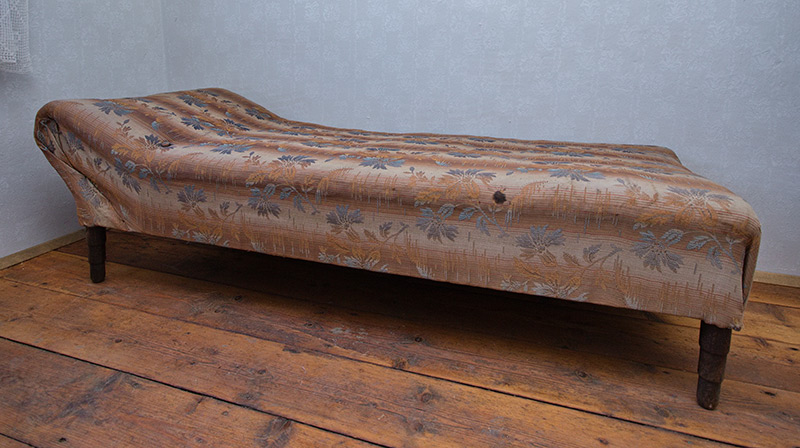Flat B, 1940s–1960s
The flat was furnished in the post-war period, a period of improved living standards of the staff, which also showed in the housing standards. However, it did not differ dramatically from the previous period. Thus, the main living room also served as a bedroom, while the pantry was furnished as an additional small room. A family with three children lived in this flat, with the bedroom, pantry and kitchen providing space for a bunk per child, respectively.
The kitchen equipment remains similar. The central feature is a tiled stove. The kitchen dresser changes in appearance at that time: it is made longer, providing more storage space. It makes up a typical kitchen set together with a cabinet, a bench and a washing surface.
After World War II, the rooms (bedrooms, dining rooms, men’s rooms) were still furnished with furniture sets. The furniture was of quality craftsmanship. It was primarily intended for multi-room apartments. However, an average flat tended to consist of a living kitchen and one or two rooms, merging several functions into one room. The furniture sets were difficult to install in small flats, and if some pieces were removed, the sets felt no longer complete. Bedroom sets lasted the longest.
The living standards improved once water supplies were ensured to the worker housing estate by means of hydrants installed in particular streets. The post-war rent was roughly 50 Czechoslovak crowns.







